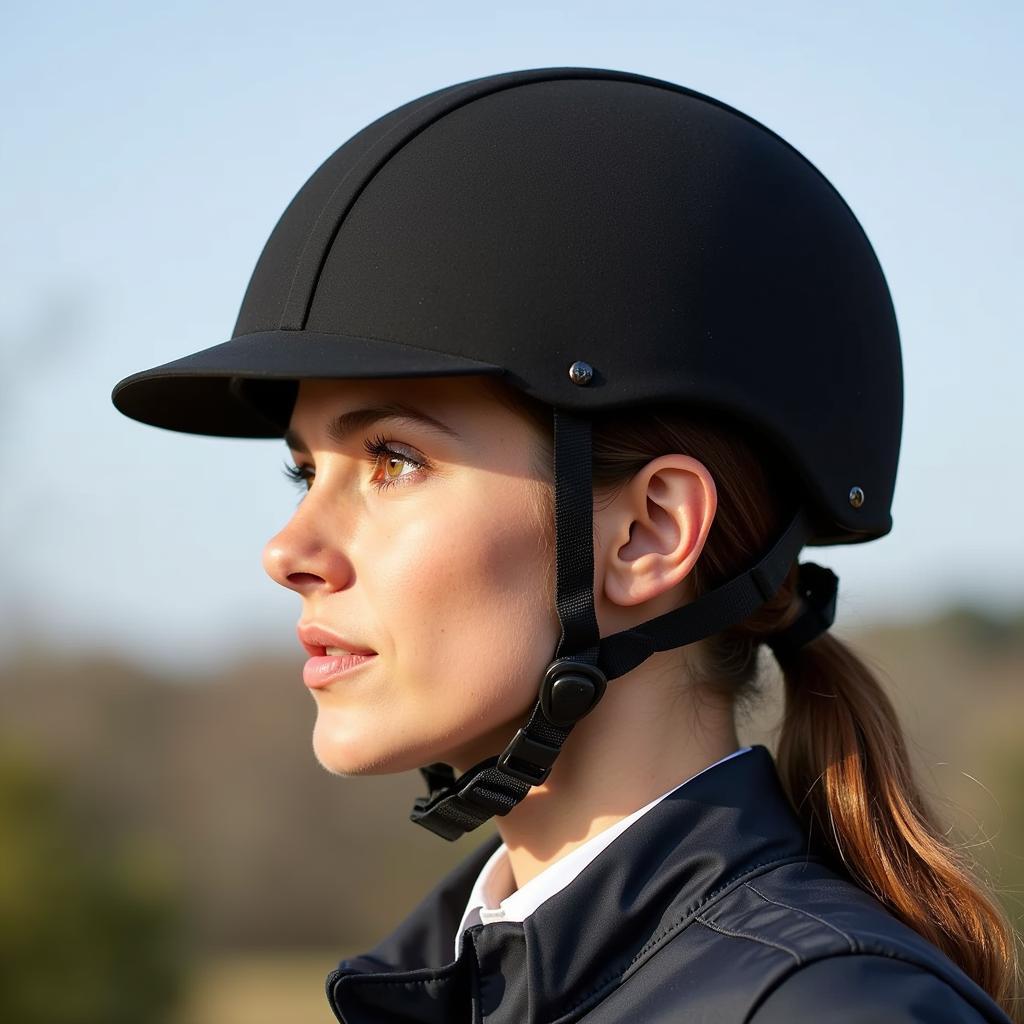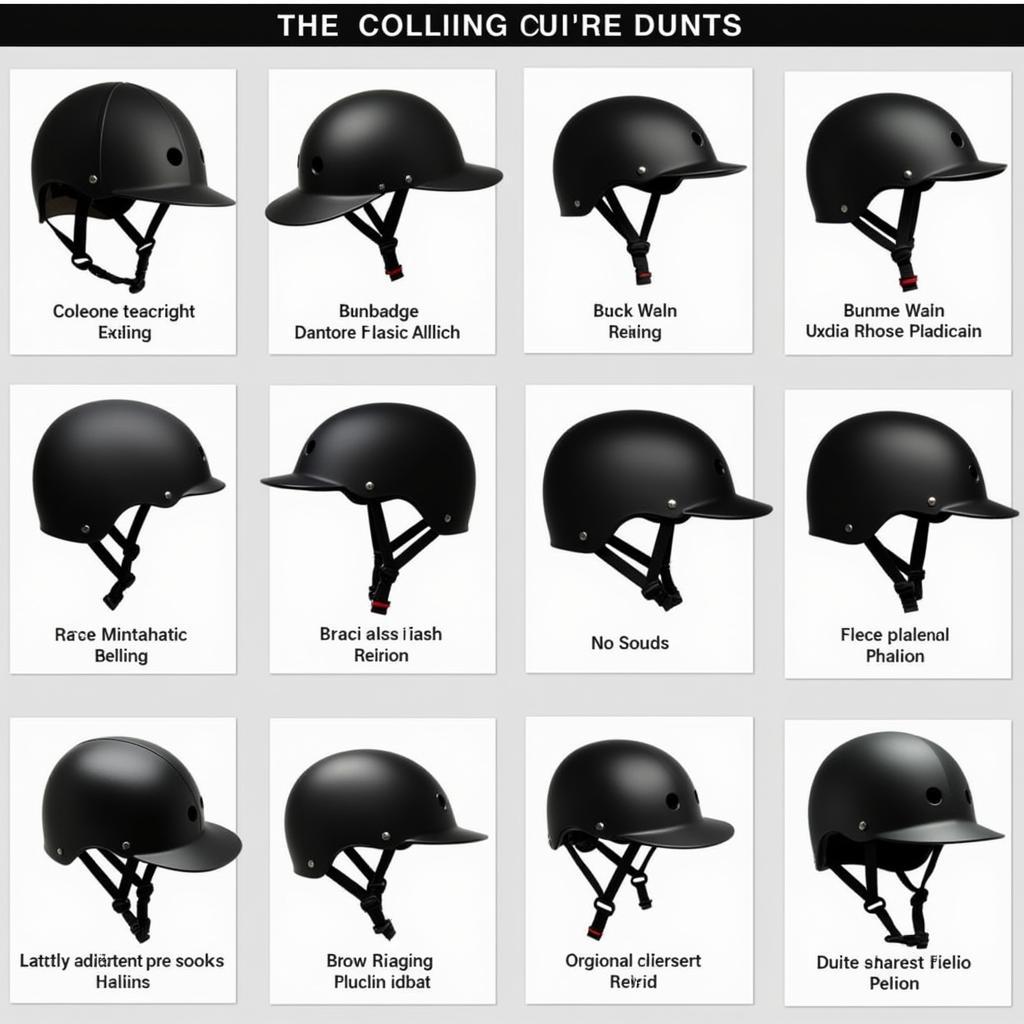Horseback riding is an exhilarating experience, but it’s crucial to prioritize safety above all else. One essential piece of safety equipment every rider should own is a helmet specifically designed for riding horses. Whether you’re a seasoned equestrian or just starting, a helmet significantly reduces the risk of head injuries during falls or unexpected events.
Understanding the Importance of Helmets for Horse Riding
Wearing a helmet is non-negotiable in equestrian sports. It protects your most valuable asset, your head, from potential impact during a fall or collision. While most experienced riders advocate for helmet use, beginners sometimes underestimate the importance of this vital piece of gear.
 Equestrian wearing a helmet while riding
Equestrian wearing a helmet while riding
Here’s why Helmets For Riding Horses are so crucial:
- Falls are unpredictable: Horses are prey animals and can be startled easily, leading to sudden movements or spooks. Even experienced riders can experience unexpected falls.
- Head injuries can be severe: A fall from a horse, even at a standstill, can result in significant head trauma.
- Helmets are proven to reduce risk: Studies have consistently shown that wearing an equestrian helmet significantly reduces the severity and likelihood of head injuries.
Choosing the Right Helmet for You
Finding the perfect helmet involves considering several factors. With various brands, styles, and safety standards available, it’s crucial to choose a helmet that fits properly and meets your riding discipline’s requirements.
Types of Riding Helmets
Different riding disciplines may require specific helmet styles. Some common types include:
- Velvet Helmets: These helmets offer a classic and elegant look, often favored for dressage and show jumping.
- Schooling Helmets: Designed for everyday riding, schooling helmets prioritize comfort, ventilation, and affordability.
- Cross-Country Helmets: These helmets provide enhanced protection to the back of the head, essential for the challenges of cross-country riding.
Helmet Safety Standards
Always ensure your chosen helmet meets recognized safety standards, such as:
- ASTM/SEI Certification: This certification indicates that the helmet meets or exceeds safety standards set by the American Society for Testing and Materials (ASTM) and the Safety Equipment Institute (SEI).
- Other International Standards: Depending on your location, other recognized safety standards, such as VG1 (Europe) or PAS 015 (United Kingdom), might apply.
Getting the Perfect Fit: Helmet Sizing and Adjustment
A properly fitted helmet is crucial for maximum protection. Follow these steps to determine your helmet size and achieve the right fit:
- Measure Your Head: Use a flexible measuring tape and wrap it around your head, about an inch above your eyebrows.
- Consult the Size Chart: Refer to the specific helmet brand’s size chart to determine your corresponding helmet size.
- Try It On: Try on the helmet and ensure it sits level on your head, covering your forehead and the back of your head.
- Adjust the Fit: Most helmets come with adjustable straps and fit systems. Tighten the chin strap so that it’s snug but not uncomfortable. Adjust any other fit systems for a secure and comfortable feel.
Caring for Your Riding Helmet
Proper helmet care ensures its longevity and protective capabilities. Remember these essential tips:
- Clean Regularly: Wipe down your helmet with a damp cloth after each use to remove sweat and dirt.
- Store Properly: Store your helmet in a cool, dry place, away from direct sunlight or heat sources.
- Inspect Regularly: Check your helmet regularly for any cracks, dents, or signs of wear and tear.
- Replace When Necessary: Replace your helmet immediately if it’s been involved in an impact, even if there’s no visible damage. Most manufacturers recommend replacing helmets every 5 years, or sooner if there are signs of wear.
Investing in Your Safety: Why a Quality Helmet Matters
 Various styles of riding helmets
Various styles of riding helmets
When it comes to your safety, never compromise. Invest in a high-quality helmet from a reputable brand. A quality helmet might cost more upfront, but it provides invaluable protection and peace of mind, allowing you to enjoy your rides with confidence.
Helmets for Riding Horses: Essential for Every Rider
Whether you’re a seasoned competitor or a casual trail rider, wearing a helmet for riding horses should be a non-negotiable safety practice. By understanding the importance of helmets, choosing the right type and fit, and caring for your helmet properly, you can ride with confidence, knowing you’re prioritizing your safety.
Remember: Always consult with experienced equestrians or professionals for personalized advice and guidance on choosing the most appropriate riding helmet for your needs.
Need more information on horse riding safety and equipment? Check out our other helpful resources:
Let’s make equestrian safety a top priority!
For any questions or assistance, contact our dedicated customer support team:
Phone: 0772127271
Email: [email protected]
Address: QGM2+WX2, Vị Trung, Vị Thuỷ, Hậu Giang, Việt Nam
We’re available 24/7 to assist you.